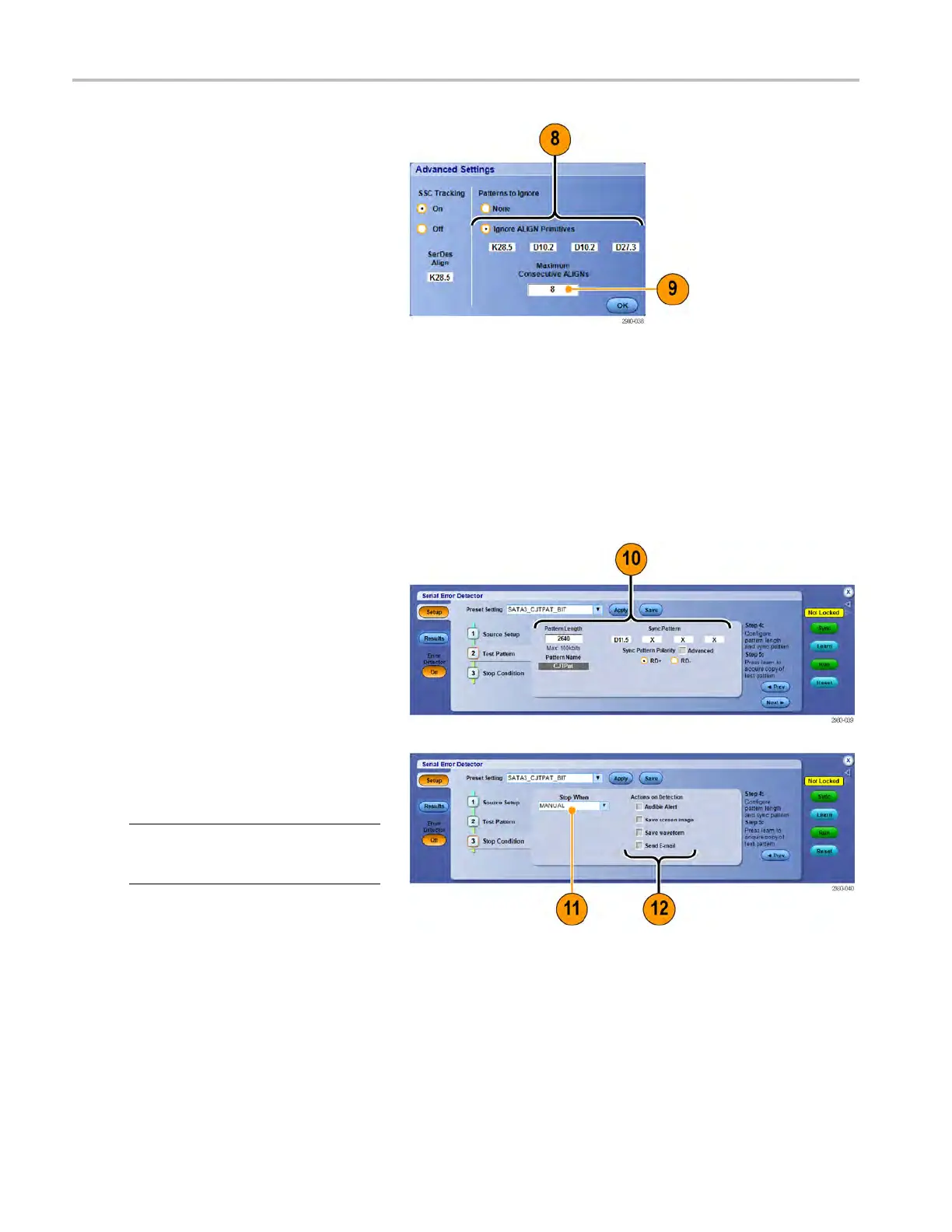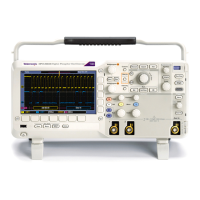Analyzing wavef
orms
8. To ignore align
primitives, select the
Ignore Align Primitives option button
and specify the primitives using the
keypad or keyb
oard.
Alignment Primitives are inserted into the
signal by the DUT for purposes of pacing
(keeping tra
nsmitter from overrunning the
receiver).
9. Enter the Maximum consecutive ALIGNs
using the keypad or keyboard.
The maximum
consecutive aligns is a design
parameter of the particular device that
indicates how many consecutive aligns are
allowed.
The Test Pa
ttern Setup provides control of the signal test pattern length and the Sync Pattern description. These are often
the most difficult settings, because they require knowledge of the s ignal. The Pattern Length is the number of bits in the
repeating signal being sent to the DUT or oscilloscope by the signal generator or AWG. The Sync Pattern is a 10-, 20-, 30-,
or 40-bit
unique pattern in the signal that the error detector uses to align the signal to the acquired comparison pattern. The
Advanced check box just allows you to set the Disparity of each of the Sync Pattern symbols individually. The X means don’t
care. The Preset Setups set these parameters to make the job easier for the common cases.
10. From the Test Pattern tab, specify the
Sync Pat
tern, Sync Pattern Polarity, and
the Pattern Length.
11. From t
he Stop Conditio n tab, select
the Stop When condition. You can stop
manually, after a preset count or time
that
you specify, or on an error.
NOTE. Use large numbers for bit count
tests. At 6 Gb/s, 60 billion bit tests take
10 s
econds.
12. S elect and setup the actions to perform
whe
n the stop condition is met. Using
these actions, you can preserve the
information captured by the oscilloscope.
Yo
u must set up the email address and
the S MTP server for Send E-mail to
work.
134 MSO/DPO70000DX, MSO/DPO70000C, DPO7000C, and MSO /DP O5000 Series U ser Manual

